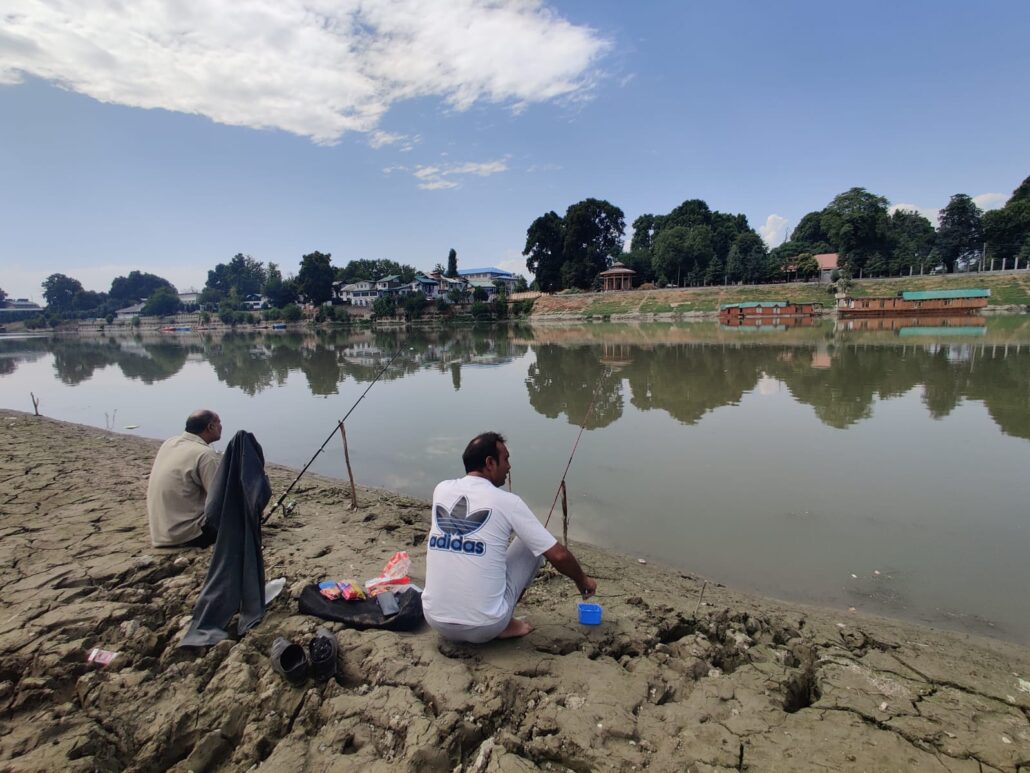The months’ long dry spell in Kashmir has left farmers struggling as the lack of rainfall continues to affect crops, from fruit to vegetables, experts and farmers said Monday.
Even as the dry spell was broken by the snowfall in upper reaches and light rain in plains, the experts opined that there was a desperate need for major spells of rainfall as trees are craving for moisture and soil is thirsty.
The scarcity of water has not only affected the sowing of new crops but also hindering the growth of the existing ones.
Farmers who usually grow a variety of vegetables, including carrots and collard greens, are finding it increasingly difficult to maintain their crops. Without water, many of these crops are withering under the relentless sun.
“Our irrigation systems are failing, and without enough moisture, even well-established plants can’t thrive,” Ghulam Hassan, a vegetable grower from Anantnag, told news agency—Kashmir News Observer (KNO).
He said, “We usually plant garlic and onions by now, but the soil is so dry that it’s like concrete. We have been dependent on irrigation, but with the rivers running low, it has become a challenge.”
With just little rainfall, farmers continue to pray for a heavy downpour that could save their crops. In Kashmir’s Pulwama district, Farooq Khan, who typically plants a variety of winter vegetables, says he is already seeing signs of distress in the seedlings. “Usually, by now, my fields would be green with garlic and onions sprouting up, but this year, barely anything has grown. The soil is just too dry, and it is hurting our ability to farm. The trees are thirsty, the soil is parched.”
Rafiqa Banoo, a vegetable farmer from the Qazigund area, explains, “Without rain, it is impossible to grow enough vegetables. I have had to abandon some of my crops because I just don’t have the water to keep them alive. Even with our best efforts to irrigate, there’s no substitute for natural rain. The plants are not taking root properly,” she said.
Talking to KNO, Independent Weather Forecaster, Faizan Arif Keng said, “This year, Jammu and Kashmir has faced a significant rainfall deficit, registering a 27% shortfall between January 1 and October 31. That gap means the region has missed out on nearly a quarter of its expected precipitation. The dry spell has been particularly severe in recent months, with September and October marking extended periods of unusually dry weather.
During the southwest monsoon season, the region recorded a 26% rainfall deficit, and October alone saw a huge 74% shortfall. In parts of South Kashmir, this deficit soared beyond 90%, leaving fields parched and vulnerable.”
He said the agricultural impact has been profound. With water sources dwindling, Kashmir’s iconic apple orchards and saffron fields have been among the hardest hit. The dry weather has led to smaller apple yields and jeopardized saffron flowering.
Arif said, “The region’s climate has become unreliable, with farmers left guessing each year whether they will face drought or damaging snowfall. Yet, these issues aren’t isolated to Kashmir; they reflect a broader, global crisis. Climate-induced crop failures, rising temperatures, and resource shortages are warnings of the potential economic devastation that climate change could unleash worldwide.”
“Climate change is not a distant threat but a crisis at our doorstep, eroding the backbone of our economies and putting countless livelihoods at risk. If governments continue to prioritize short-term political gains over long-term environmental stability, they are knowingly sacrificing the prosperity and security of future generations,” he said.
He added politicians and leaders must look beyond the narrow focus of five-year election cycles and recognize that climate action is a matter of national survival. The choice is clear: commit to transformative change today, or face the irreversible damage of tomorrow. There is no room left for compromise.”
Talking to KNO, Prof. S.K. Raina (Soil Scientist) said that during the fall season, vegetables and other crops are not significantly impacted by the dry spell. He explained that crops need moisture during March and April, as this is their active growing season.
He said that fruit has already been harvested in Kashmir, and those plants have entered hibernation, so they will not be affected by the dry spell.
“Oil seeds and lentils, however, are somewhat impacted in Kashmir due to the dry spell, as they require moisture during sowing and reliable irrigation facilities,” Raina said.
“Deforestation in Kashmir is significantly impacting local weather patterns,” says Aijaz Ahmed, an earth sciences professor from Srinagar. “Trees regulate the climate by absorbing carbon dioxide, maintaining moisture, and influencing rainfall. Cutting them reduces moisture in the atmosphere, leading to less rainfall and prolonged dry spells.”
He adds, “Trees also cool the environment by releasing water vapor. Without them, temperatures rise, and desertification becomes more likely. This not only affects local climates but also contributes to global warming.”
Ahmed warns, “Thousands of trees are being cut for developmental projects, which is worsening climate instability and increasing the risk of extreme weather events like droughts and floods.” (With inputs from KNO)
